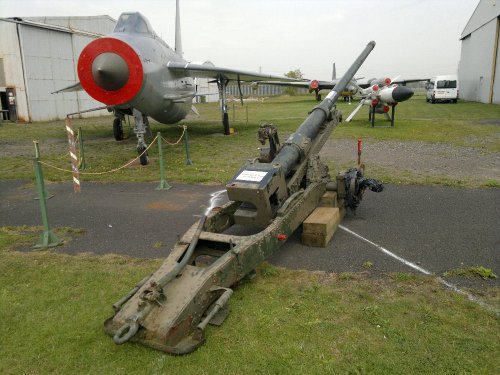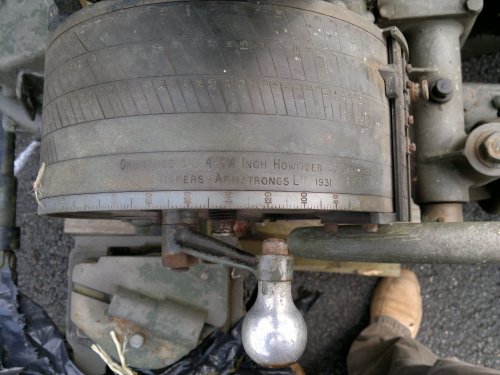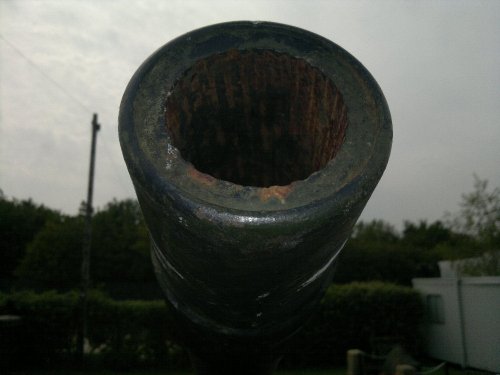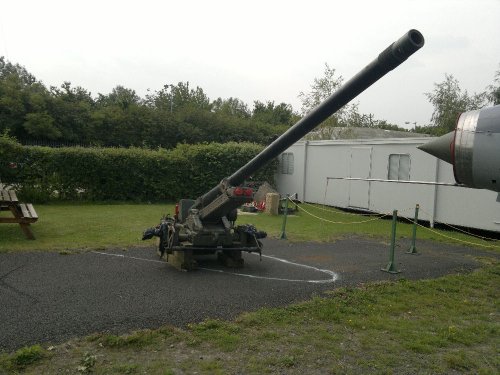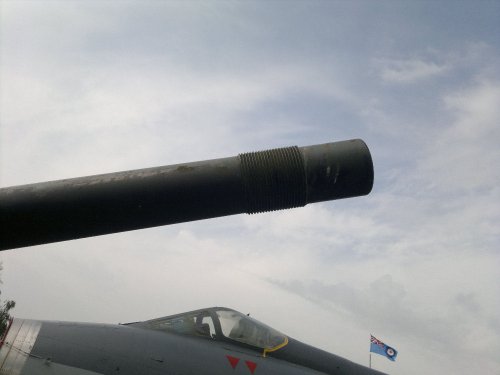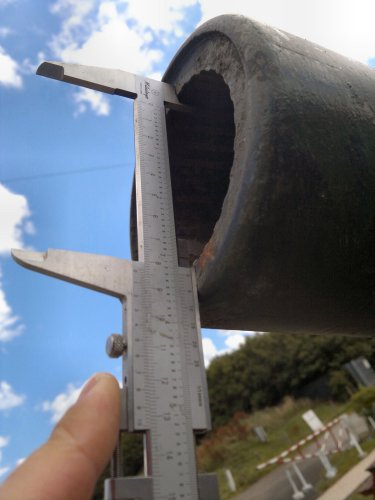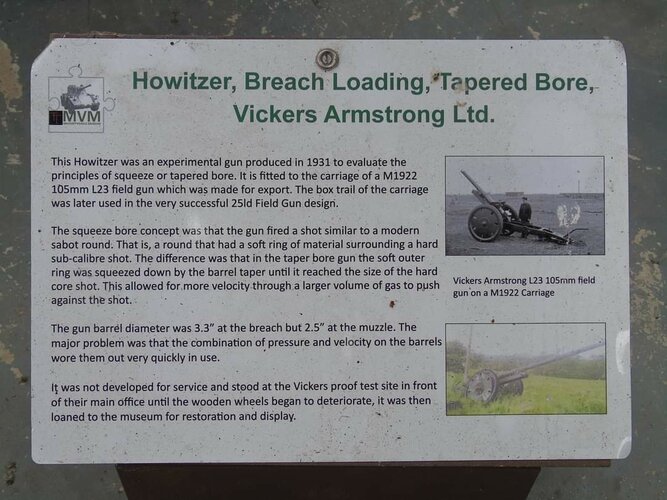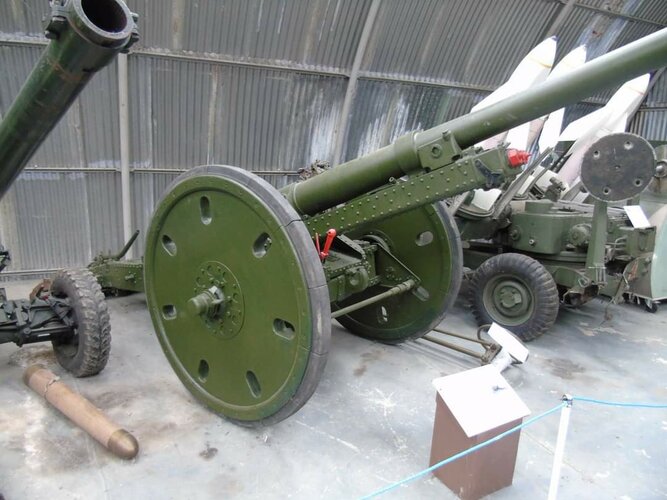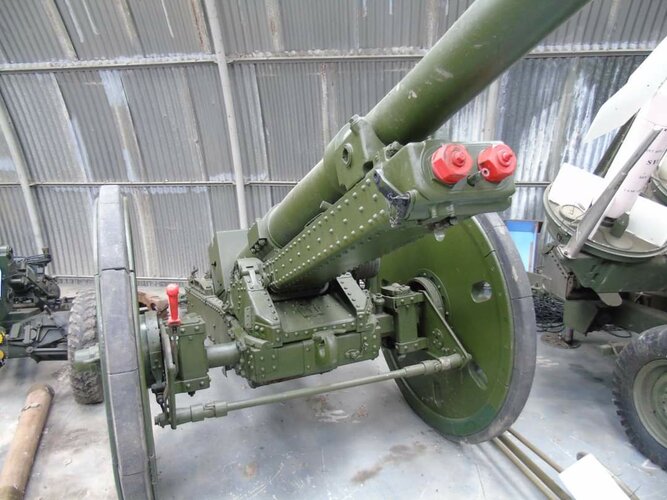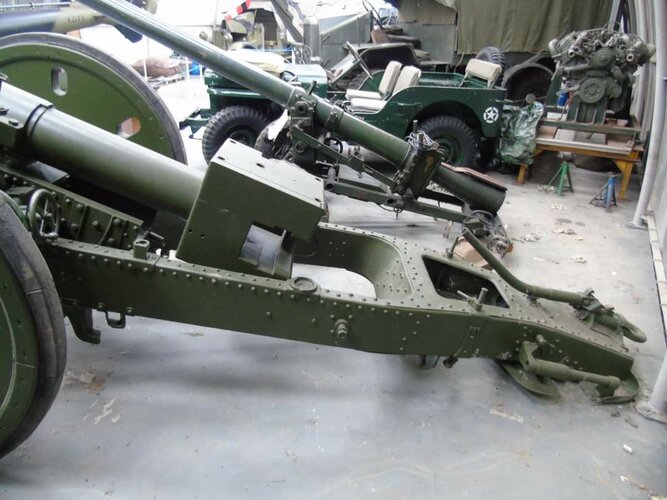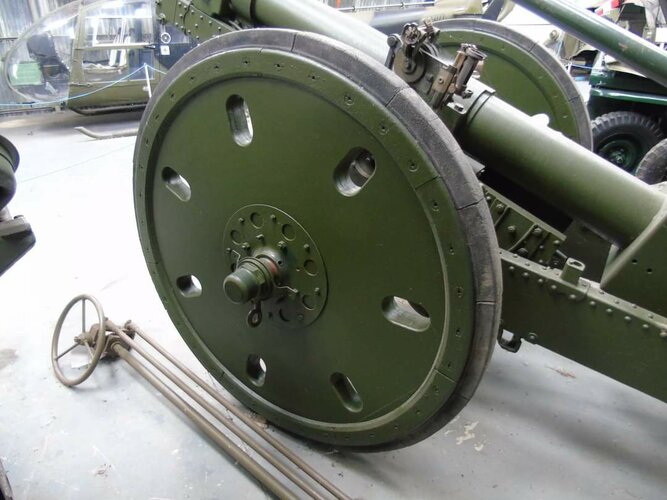- Joined
- 26 May 2011
- Messages
- 2,106
- Reaction score
- 2,678
I visited the North East Air Museum at Sunderland today and they have a very peculiar artillery piece on show outside. The chaps decribed it as a "squeeze-bore" barrel fitted to an interwar carriage. It was recovered from the Otterburn Ranges earlier this year. It came with a pair of rather rotten wooden wheels
Sure enough, the elevation kit carries the wording "Ordnance BL 4.164 Inch Howitzer 26 Calibres"
So, that's for a 105mm Howitzer and if I recall 26 x 4.134inches = 107.64 inches barrel length = 8.97ft (let's call it 9ft)
However the barrel is more like 15ft in length.
So, the museum chaps are calling it a squeeze-bore barrel and (I havent taken the calipers to it) it looks around around 4" bore at the muzzle.
I f the chaps are correct in calling it a squeeze-bore gun, could this be related to the Vickers 4.26/3.2 Gun? Vickers was just up the road in Newcastle.
I'll acquire some calipers and go back up and do some proper measuring.
If it is the barrel of the 4.26/3.2, why is it on an interwar 105mm howitzer carriage?
Chris
Sure enough, the elevation kit carries the wording "Ordnance BL 4.164 Inch Howitzer 26 Calibres"
So, that's for a 105mm Howitzer and if I recall 26 x 4.134inches = 107.64 inches barrel length = 8.97ft (let's call it 9ft)
However the barrel is more like 15ft in length.
So, the museum chaps are calling it a squeeze-bore barrel and (I havent taken the calipers to it) it looks around around 4" bore at the muzzle.
I f the chaps are correct in calling it a squeeze-bore gun, could this be related to the Vickers 4.26/3.2 Gun? Vickers was just up the road in Newcastle.
I'll acquire some calipers and go back up and do some proper measuring.
If it is the barrel of the 4.26/3.2, why is it on an interwar 105mm howitzer carriage?
Chris

